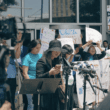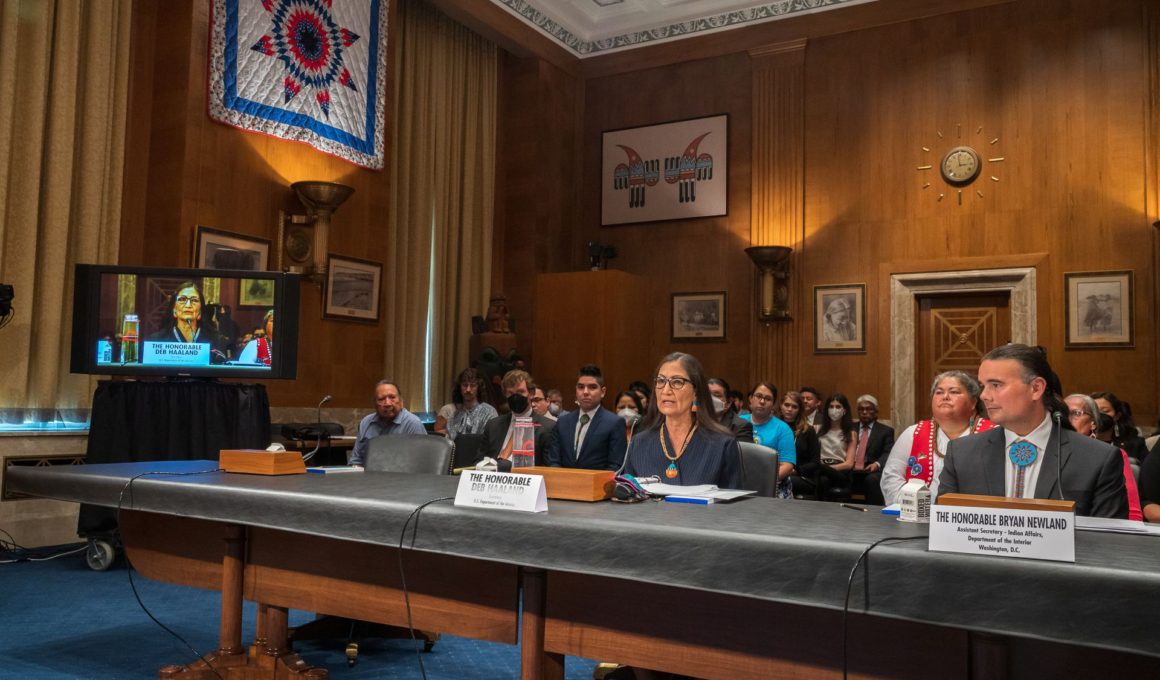Sign up here to receive The Yappie's weekly briefing on Asian American + Pacific Islander politics and support our work by making a donation.
The U.S. policy of Indigenous boarding schools and forced assimilation traumatized generations of Native Hawaiians for more than a century and a half, washing out the Hawaiian language that now faces extinction as the number of those who remember it decline, experts testified at a Senate oversight hearing this week.
Native Hawaiian children and adults were forced to abandon their religion and culture, and forbidden from speaking their language in accordance with a federal policy beginning in the early 1800s—before the illegal overthrow of the Hawaiian monarchy and years later, Hawaiian statehood.
From 1819 to 1969, the United States funded and operated seven boarding schools across the Hawaiian islands out of approximately 400 in 37 states or then-territories, the investigation found. Schools and religious organizations were given a mandate to “civilize” Native American, Alaskan Native, and Native Hawaiian children—forcing them to discard tribal practices and adopt Christian ones.
But boarding schools were merely “delivery agents” for a broader U.S. policy—one aimed at assimilating Indigenous peoples and erasing their identities, Norma Ryūkō Kawelokū Wong, an activist and former Hawai‘i state legislator, testified during the hearing, which focused on findings from a damning Interior Department report released in May.
Descendents of Native Hawaiians who faced abuse in the federal school system know a “specific pain,” Wong said during her testimony before the Senate Committee on Indian Affairs, which is chaired by Sen. Brian Schatz (D-Hawai‘i).
The school system was “traumatic and violent,” Interior Secretary Deb Haaland, a member of Pueblo of Laguna and the first Native American to serve as a U.S. Cabinet member, told the committee. Haaland’s grandparents were among the more than 10,000 American Indian, Alaska Native, and Native Hawaiians who were forcibly removed from their homes as young children.
Some schools intentionally mixed children belonging to different tribes and tribal organizations in attempts to disrupt the use of languages outside of English, according to the report. Many used corporal punishment and starvation as tools for forced assimilation. Hundreds of Indigenous children died in the system, according to the May report.
“Many never returned,” said Haaland as she choked back tears during the hearing.
Grief across generations


In 1887, then-Commissioner of Indian Affairs J. D. C. Atkins, a slave owner from Tennessee, banned U.S. schools from teaching Native languages and Native children from speaking them. A decade later, following the U.S. government’s illegal overthrow of the Hawaiian kingdom in 1893, the same policy was forced onto Native Hawaiian children—including Wong’s grandmother, who didn’t speak her native tongue again until two weeks before she died, Wong said in her testimony Wednesday.
Even before white Americans illegally overthrew the Hawaiian kingdom, groups outside of the U.S. government receiving federal support—notably Christian missionary organizations—had begun forcibly assimilating Native Hawaiians, both adults and children. The Christian groups were paid subsidies to build schools and religious institutions for the express purpose of promoting Calvinist beliefs, converting people to Christianity, and decimating the spoken Native Hawaiian language.
Children in these missionary-led schools faced disciplinary practices such as food withholding, solitary confinement, and flogging. Many were also forced to participate in military drills and manual labor.
Though schools today don’t necessarily operate in the same ways anymore, remnants of the push for assimilation remain, according to Julie Kaomea, an education professor at the University of Hawaiʻi at Mānoa who is Native Hawaiian.
“Time and again we find that various early childhood and social service agencies in Hawai‘i view Native Hawaiian parents and families, and our influence on our young children, as a ‘problem’—a detriment to be compensated for rather than a source of strength and knowledge to be supported and built upon,” Kaomea wrote in a 2005 essay published in the journal Hūlili: Multidisciplinary Research on Hawaiian Well-Being.
“In Hawai‘i, as in other indigenous nations across the globe, colonial domination took our once healthy, thriving, and self-sufficient indigenous society and distorted it horribly,” she noted. “Now, a little more than 200 years later, statistics tell us that many Hawaiian families are poor, unhealthy, unstable, and uneducated, and that our children are consequently at risk physically, cognitively, socially, and emotionally.”
“What these statistics neglect to explain is that sandwiched between these contrasting social portraits is a history of invasion and colonialism: a familiar story of theft, genocide, and exploitation.”
A necessary reckoning
Centuries later, the Department of Interior is spearheading an investigation into the U.S. government’s atrocities against Native American, Alaskan Native, and Native Hawaiians. The May report, which outlined the systematic “identity-alteration methodologies” employed at these schools, is volume one of the probe.
The Interior has also awarded $7 million to Indigenous tribes and tribal organizations, which will be able to use the funding to “document and revitalize” languages that were banned and now risk extinction.
The reconnection to their language is only one step forward, Wong—who was the Native Hawaiian policy lead under former Hawai‘i Gov. John Waiheʻe III (D)—said during the hearing on Wednesday.
“We all experienced forced norming, the stripping of language and ways, the separation from land, family and peoples,” said Wong. The investigation and funding for healing and language revitalization should be meant “not as a reparation, but a reconnecting to a fruitful path.”
Sen. Elizabeth Warren (D-Massachusetts) re-introduced a bill last September that would establish a truth and healing commission on Indian boarding school policies to seek “healing for stolen Native children and their communities.”
The commission would be tasked with investigating how U.S. government policies intentionally advanced the “attempted cultural, religious, and linguistic termination of American Indians, Alaska Natives, and Native Hawaiians”; identifying the policy’s ongoing effects; and working to “locate and identify unmarked graves at Indian boarding school sites or off-campus cemeteries,” according to a release from Warren’s office.
“Every person and descendant needs a way to be seen or heard. Resources will be needed for grieving and therapeutic healing and gatherings. The energy of what’s happened in these spaces and places needs tending to if repair is to be had,” Wong testified. “Ritual, ceremony, repurposing, that is the Indigenous way.”
The Yappie is your must-read briefing on AAPI power, politics, and influence, fiscally sponsored by the Asian American Journalists Association. Make a donation, subscribe, and follow us on Twitter (@theyappie). Send tips and feedback to [email protected].









